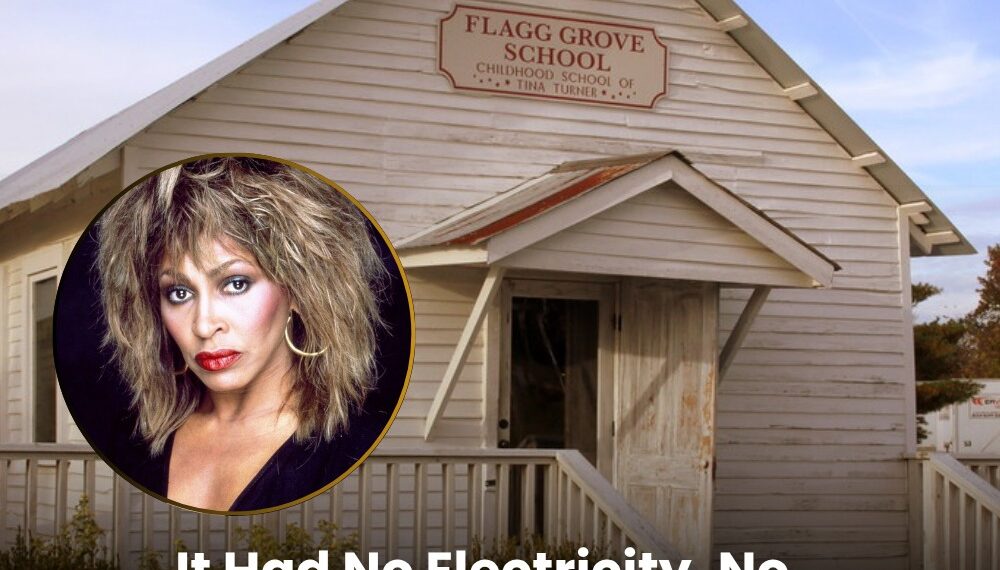Before she became the electrifying “Queen of Rock ’n’ Roll,” Tina Turner—born Anna Mae Bullock—sat in a humble one-room schoolhouse that shaped her early years and spirit. The Flagg Grove School, built in 1889 by her great-uncle Benjamin Flagg, served as the educational cornerstone for Black children in Nutbush, Tennessee, during an era of segregation and scarce resources. Despite its barebones facilities—no electricity, no indoor plumbing, and outhouses for sanitation—this tiny school ignited the fire that would propel Tina from rural roots to global superstardom.Tina attended Flagg Grove throughout the 1940s and early 1950s, navigating a childhood marked by family struggles and relocation. In video presentations at the museum, she fondly recalls the simple wooden desks, the thrill of recess, and even schoolyard antics—like a classmate named Boobie who liked to throw rocks. “I remember exactly what it looked like,” she said, reflecting on the building’s modest, weathered appearance.The school closed in 1967 and was repurposed as a barn, falling into disrepair amid the Tennessee farmland. But the legacy of Flagg Grove—and Tina’s remarkable story—sparked a preservation effort in the early 2010s. In 2012, the schoolhouse was carefully relocated about 10 miles away to Brownsville’s West Tennessee Delta Heritage Center, transported by tractor-trailer to save this rare relic of African American education.The painstaking restoration took two years, maintaining original features like chalkboards, benches, and cubbies. Tina Turner herself, living in Switzerland at the time, became deeply involved once she realized the school was the actual Flagg Grove building. She donated personal memorabilia—from stage costumes and gold records to her high school yearbook and items from her farewell tour—creating a powerful bridge between her modest beginnings and her dazzling career.In September 2014, the Flagg Grove School reopened as the Tina Turner Museum, a public tribute that draws thousands annually. Situated just off Interstate 40 in Brownsville, the museum offers visitors a striking contrast: the rustic classroom environment next to exhibits showcasing Tina’s signature sparkly outfits, videos of her performances, and intimate storytelling about her rise from Nutbush to worldwide acclaim.
Sonia Outlaw-Clark, director of the heritage center, emphasized Tina’s desire to highlight education’s importance and share the genuine story of where she came from. The museum stands as a testament not only to the singer’s resilience and talent but also to a bygone era of American history—one that forged strength from hardship and dreams from humble places.
From a school without electricity or bathrooms to sold-out arenas worldwide, the story of Flagg Grove encapsulates the spirit of Tina Turner: unyielding, radiant, and forever inspiring.
Content retrieved from: https://storyhorizon.net/news/91679?fbclid=IwY2xjawLqvVBleHRuA2FlbQIxMABicmlkETFqVDBUOHVpVWtNZG5ZbnBQAR7QSFGQfw6fn6fJPjmtgAElZoEFWELd-W2wOOkATj257Hwdd4a4YW_G1_KYEA_aem_Bwc9jLC36nfDsiMOog14Ag.

















